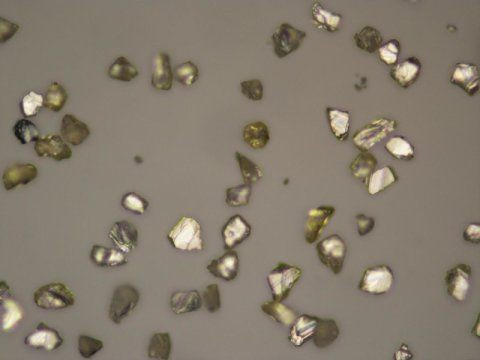Detecting Cancer With Diamonds: A New Treatment Should Catch Disease In Its Early Stages

Researchers at the University of Sydney have recently developed tiny synthetic diamonds that can aid in the fight against cancer — by lighting up areas of cancer in MRI scans. The innovative technique could help especially in detecting cancers that are difficult to find early on, like brain and pancreatic cancers.
“Brain and pancreatic cancers are two of the most deadly cancers, so anything which potentially detects these cancers earlier is obviously very welcome news,” Helen Zorbas, chief executive of Cancer Australia, told ABC News. “It potentially means that treatment can be more effective.”
The study, published in Nature Communications, is based in part on past research that examined how nanodiamonds are capable of acting as a delivery service for cancer drugs. In that study, researchers found that nanodiamonds could penetrate cell walls without damaging them, thus acting as potential drug delivery carriers during chemotherapy.
“We knew nanodiamonds were of interest for delivering drugs during chemotherapy because they are largely non-toxic and non-reactive,” Professor David Reilly of the School of Physics, lead author of the study, said in the press release. “We thought we could build on these non-toxic properties realizing that diamonds have magnetic characteristics enabling them to act as beacons in MRIs. We effectively turned a pharmaceutical problem into a physics problem.”
Reilly and his team of physicists hyperpolarized nanodiamonds, in which they aligned atoms inside a diamond to give it a “signal” that would be detected by MRIs. When they attached the hyperpolarized diamons to molecules targeting the cancers, the method allowed “tracking of the molecules’ movement in the body,” Ewa Rej, another author of the study, said in the press release.
It’s certainly quite innovative to employ quantum physics in the fight against cancer — but researchers are finding other unique and interesting pathways to develop new cancer treatments as well. There’s personalized cancer treatment, for example, which focuses on a tumor’s molecular makeup and a person’s genetics to decide which forms of medications or therapies will be best and most effective for that patient.
Researchers are also finding ways to harness the immune system to attack cancer cells, a field of interest known as immunotherapy, which has shown great promise in treating melanoma and other types of cancer. Perhaps this is why supporting such innovative pathways is important — even if it may seem initially that they’re too far-fetched.
“This is a great example of how quantum physics research tackles real-world problems, in this case opening the way for us to image and target cancers long before they become life-threatening,” Reilly said in the press release. Reilly and his team plan on collaborating with medical researchers next, to test their diamond method on animals.
Source: Rej E, Gaebel T, Boele T, Waddington D, Reilly D. Hyperpolarized nanodiamond with long spin-relaxation times. Nature Communications. 2015.
Published by Medicaldaily.com



























